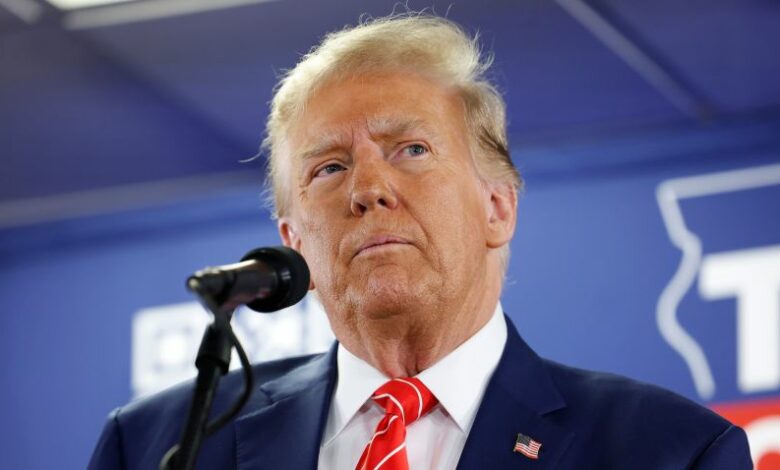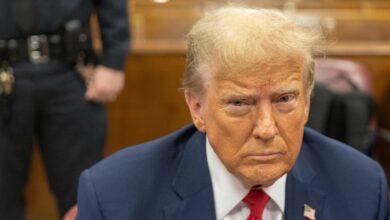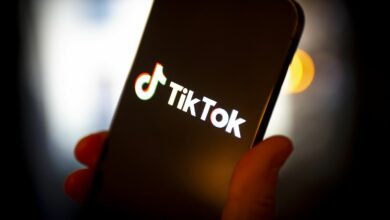
In a repudiation of the notion that Trump’s actions left him ineligible under the 14th Amendment’s “insurrectionist ban,” a unanimous court ruled that an individual state could not dump the former president from the ballot.
But the justices did not say if Trump was in fact an insurrectionist and split on technicalities of how the ban could be enforced – a distinction with potentially broad consequences.
The opinion reversed a stunning decision last year from Colorado’s top court that found Trump engaged in an insurrection because of his remarks outside the White House before the 2021 attack on the US Capitol. Those actions, the state court ruled, violated Section 3 of the 14th Amendment and left Trump ineligible to appear on the state’s ballot.
Since then, both Maine and Illinois also moved to take Trump off the ballot. Monday’s Supreme Court decision appeared certain to shut down those and other efforts to remove the frontrunner for the GOP nomination from the ballot.
“States may disqualify persons holding or attempting to hold state office,” the court’s unsigned majority opinion read. “But states have no power under the Constitution to enforce Section 3 with respect to federal offices, especially the presidency.”
Here’s what to know about the opinion and what it means:
Bottom line: Trump will appear on ballots
There was no equivocation in the Supreme Court’s short opinion: States do not have the power to remove a federal candidate – especially a president – from the ballot under the Constitution’s “insurrectionist ban.” It is Congress, the court wrote, that can enforce the provision, not states.
“The notion that the Constitution grants the states freer rein than Congress to decide how Section 3 should be enforced with respect to federal officer is simply implausible,” the court’s unsigned opinion read.
What that means is that the impact of the decision will sweep far wider than the controversy at issue in Colorado. It means that any state would be overstepping its power by trying to knock Trump off the ballot – a position that will almost certainly shut down similar “insurrectionist” lawsuits across the country.
In that sense, the court’s opinion was a significant victory for Trump, vanquishing a legal theory that has for months threatened his viability for a second term.
Court appears to head off 2025 showdown
The high court’s opinion went farther than shutting down state enforcement of the insurrectionist ban. It appeared to make it much harder for it to be enforced at the federal level as well.
And that is where the unity on the court split apart, with four justices – Amy Coney Barrett, Sonia Sotomayor, Elena Kagan and Ketanji Brown Jackson – asserting that their colleagues went too far. Barrett is a conservative Trump nominee and the other three are members of the liberal wing.
The court’s opinion, the three liberal justices wrote in a concurrence, “shuts the door on other potential means of federal enforcement,” by requiring Congress to act to pass legislation first, something that’s highly unlikely. By doing so, the three wrote, “the majority attempts to insulate all alleged insurrectionists from future challenges to their holding federal office.”
The move appeared to head off a concern that a narrow ruling from the court could lead to a messy confrontation in Congress when the electoral votes are counted in 2025. A group of legal experts feared an outcome that would leave unclear whether lawmakers opposed to Trump could attempt to disqualify him after the election.
Supreme Court avoids insurrectionist debate
The Supreme Court’s opinion doesn’t directly address whether Trump’s actions on January 6 qualified as an “insurrection” – skirting an issue that the courts in Colorado wrestled with.
The unsigned opinion noted that lower courts in Colorado found Trump’s remarks before the attack on the US Capitol qualified as engaging in an insurrection within the meaning of the Constitution. But the court’s unsigned opinion didn’t return to that judgment direction.
That tracks with what experts had predicted would happen, that the justices would seek to decide the ballot case in a more narrow way without saying much of anything about Trump’s actions.
Citizens for Responsibility and Ethics in Washington, the liberal watchdog group that filed the suit, focused on the point in a statement after the decision.
“While the Supreme Court allowed Donald Trump back on the ballot on technical legal grounds, this was in no way a win for Trump,” Noah Bookbinder, the group’s president said. “The Supreme Court had the opportunity in this case to exonerate Trump, and they chose not to do so.”
Barrett’s concern with ‘national temperature’
Barrett devoted more than half of her one-page concurrence to urging the public to look past the fact that four of the court’s members – herself included – disagreed with how broadly their colleagues decided the case.
The conservative justice stressed that although she and the three liberal justices were at odds with their other colleagues, “this is not the time to amplify disagreement with stridency.”
“The court has settled a politically charged issue in the volatile season of a Presidential election. Particularly in this circumstance, writings on the court should turn the national temperature down, not up,” Barrett wrote.
She continued: “For present purposes, our differences are far less important than our unanimity: All nine Justices agree on the outcome of this case. That is the message Americans should take home.”
The Colorado dispute was one of several high-profile Trump-related cases before the court this term, and its inclusion on the court’s docket likely contributed to more lukewarm poll numbers for the justices. A poll taken last month around the time that the case was heard showed the public’s approval rating of the high court standing at just 40%.
Liberal wing rebukes majority for opinion’s sweep
The court’s three liberals – Sotomayor, Kagan and Jackson – sharply criticized the majority for the breadth of the opinion. The issue of Trump’s eligibility could have been decided simply, they said, by ruling that states can’t enforce the insurrectionist ban on their own.
“In a sensitive case crying out for judicial restraint,” they wrote, the court’s unsigned opinion, “abandons that course.”
The three focused their ire on the fact that the majority opinion limited federal enforcement of the insurrection ban as well as state enforcement. That decision, they said, wasn’t before the Supreme Court in the case and would “insulate all alleged insurrectionists” from future challenges.
Nobody took credit for writing the opinion
No justice signed their name to take responsibility for writing the opinion keeping Trump on the ballot.
To begin with, the court handed down what’s known as a “per curiam” opinion, a Latin term that translates to “by the court.” Such opinions are relatively rare and are sometimes used to signal consensus – even though they are not always unanimous.
Per curium opinions are “unsigned,” which means that unlike most opinions, the public doesn’t know who wrote them and can’t always glean the vote count.
Per curiam opinions have faced criticism from some quarters for that very reason: They allow the court to resolve controversial issues without explicitly making clear their authorship. Among the most notable per curiam opinions in the court’s history was the Bush v. Gore decision, which effectively settled the 2000 election for President George W. Bush.
Meanwhile, the “concurring” opinions at times looked likely sharply worded dissents. So despite the unity of the per curiam judgment there was considerable disagreement about some of the court’s reasoning.
This story has been updated with additional details.




